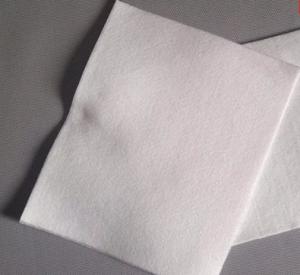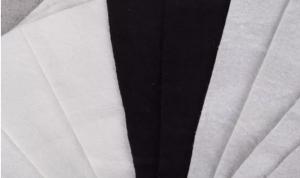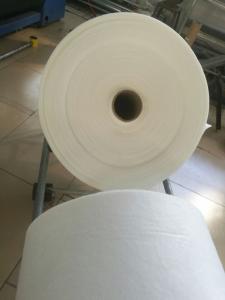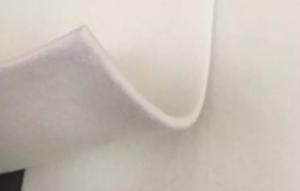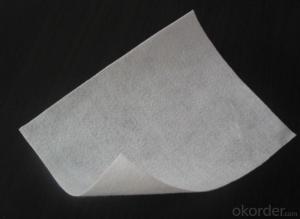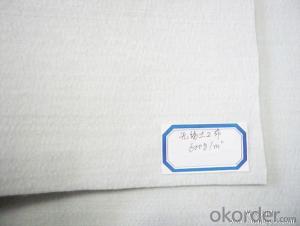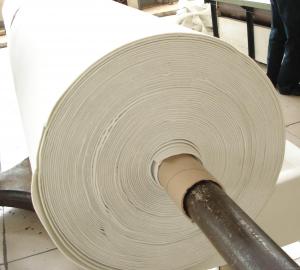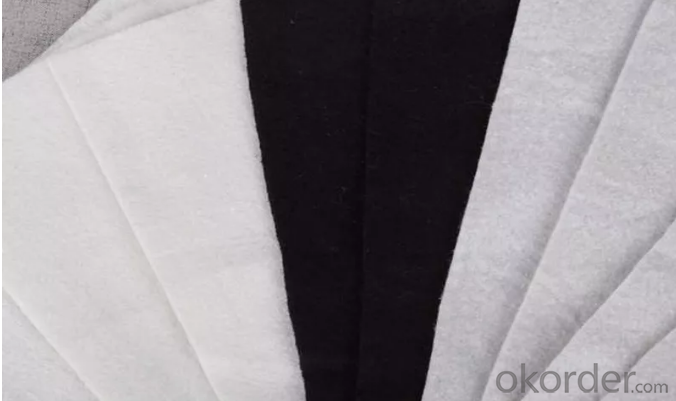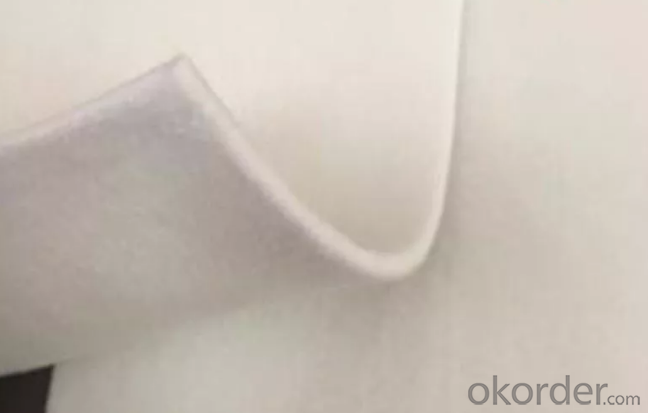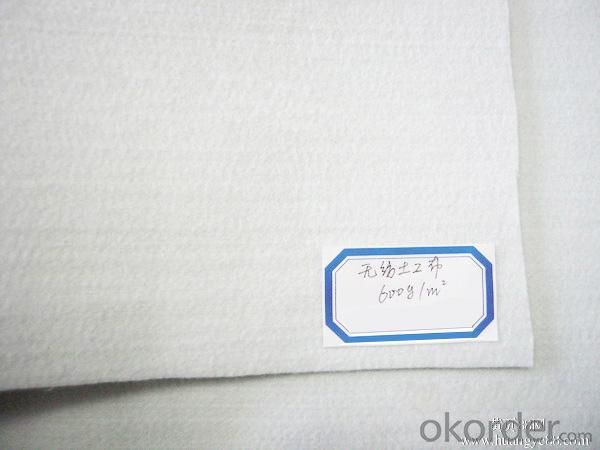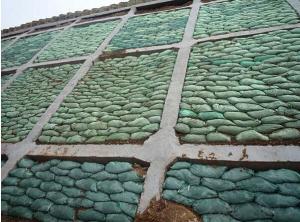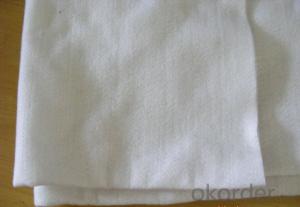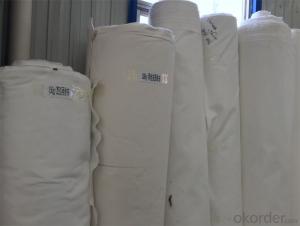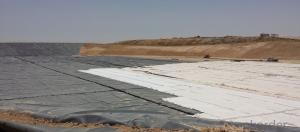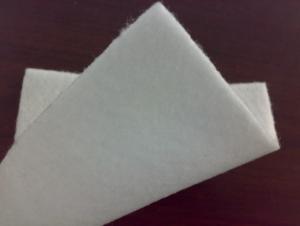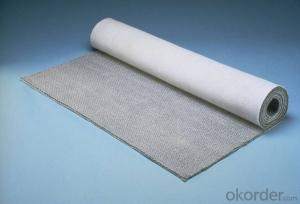Polyester Short Fiber Needle Punched Nonwoven Geotextile
- Loading Port:
- Qingdao
- Payment Terms:
- TT or LC
- Min Order Qty:
- 5000 m²
- Supply Capability:
- 100000 m²/month
OKorder Service Pledge
OKorder Financial Service
You Might Also Like
Polyester Short Fiber Needle Punched Nonwoven Geotextile
1. Product Description:
Needle punched nonwoven Geotextiles are made of polyester or polypropylene in random directions and punched together by needles.
Geotextiles has good impermeability and resistance to deformation, which allows geotextiles be widely applied in civil projects for separation,filtration,reinforcement, protection and drainage.
Geotextiles can be used as:
* Filtration or separation layers in civil engineering projects of roads and railway construction;
* Protect layer for geomembranes in landfill construction;
* Coastal defence applications
* Landscaping projects to maintain soil and protect land surfaces and structures from weeds and root growth.
2. Data sheet:

3. Main Features
2) High temperature resistance to up to 230℃ maintaining structure stability and original physical properties;
3) High flat drainage and vertical permeability;
4) High creep resistance;
5) Resistance of erosion of chemicals in soil as well as the corrosion of gasoline and diesel etc;
6) High elongation under certain stress, thus able to adapt to uneven and irregular bases;
4. Packaging & Shipping:
white fabric bag or black PE bag outside or as required.
7 days after received deposite
5. Applications of NON-Woven Geotextile :
Non woven Geotextiles can be widely used in railways, highways, sports halls, ,garbage dump ,dams, hydraulic construction, tunnels, coastal beaches, land reclamation, environmental protection and other projects.
Notes : The specification is based on mass area ratio.
When the actual specification is between adjacent specifications in this table, it is necessary to calculate the corresponding evaluation indicators in accordance with the interpolation method;
If the range in table is exceeded, it is necessary to determine the evaluation indicators through consultation by the supply and demand sides.
6.Pictures
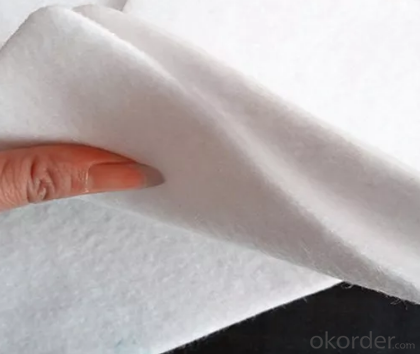
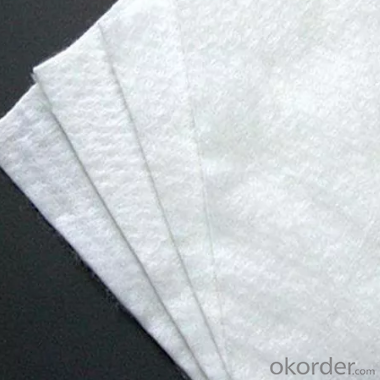
7. FAQ:
Q1: Can you provide a sample for us?
A:Yes,We can send free samples,but customer need to pay the freight.
Q2: What is your minimum order quantity?
A:The minimum order quantity is 5000,but it is negotiable.
Q3:What is your payment terms?
A: T/T,Western Union,L/C.
Q4:What is your delivery time?
A:Production time usually costs 2-20 days.
- Q: Can geotextiles be used for erosion control in beach nourishment projects?
- Yes, geotextiles can be used for erosion control in beach nourishment projects. Geotextiles are commonly used to stabilize and reinforce the sand in beach nourishment projects, preventing erosion by reducing wave impact and promoting sediment retention. They act as a barrier, allowing water to pass through while trapping sand particles and preventing them from being washed away. Geotextiles can effectively enhance the longevity and stability of beach nourishment efforts, contributing to erosion control.
- Q: How do geotextiles contribute to disaster management?
- Geotextiles play a crucial role in disaster management by providing effective solutions for various disaster-related challenges. They can be used to reinforce unstable slopes, control erosion, and stabilize soil during floods, earthquakes, or landslides. Geotextiles also aid in the construction of temporary roads, shelters, and embankments, allowing for easier access to affected areas and facilitating relief operations. Their ability to filter and drain water helps in managing excess rainfall or groundwater, preventing further damage. Overall, geotextiles are versatile and reliable tools that contribute to mitigating and managing the impacts of disasters.
- Q: Are geotextiles resistant to rodent penetration?
- Yes, geotextiles are generally resistant to rodent penetration. They are designed to have a dense structure and strong construction that discourages rodents from burrowing or chewing through them. However, it is important to note that while geotextiles offer resistance, they may not be completely impervious to all types of rodents.
- Q: What are the specifications for geotextiles used in erosion control tubes?
- The specifications for geotextiles used in erosion control tubes vary depending on the specific requirements of the project. However, common specifications include material type (typically woven or non-woven), tensile strength, permeability, UV resistance, and durability. The geotextiles should be able to retain soil particles while allowing water to pass through, effectively preventing erosion.
- Q: What are the cost considerations for geotextiles?
- The cost considerations for geotextiles include the material cost, installation cost, maintenance cost, and the overall lifespan of the geotextile. Additionally, factors such as the type and quality of the geotextile, the size of the project, and any specific requirements or regulations can also impact the cost. It is important to carefully evaluate these considerations to determine the most cost-effective solution for a geotextile application.
- Q: What are the applications of geotextiles in road construction?
- Geotextiles have several applications in road construction, including separation, filtration, and reinforcement. They are commonly used to separate the subgrade from the base material, preventing mixing and maintaining the integrity of the road structure. Geotextiles also act as a filtration layer, allowing water to drain while preventing the migration of fine particles. Additionally, they provide reinforcement and stabilization to the road, improving its strength and durability. Overall, geotextiles play a crucial role in enhancing the performance and longevity of roads.
- Q: Can geotextiles be used in coastal erosion control in beach nourishment projects?
- Yes, geotextiles can be used in coastal erosion control in beach nourishment projects. Geotextiles are often employed as a part of a layered system to prevent erosion by stabilizing the beach sediment. They act as a barrier between the beach material and the underlying soil, reducing erosion caused by water movement and wave action. Additionally, geotextiles can help to retain and distribute sand, enhancing beach nourishment efforts and providing long-term protection against coastal erosion.
- Q: What is geotextile? Geotextile is what
- Geotextile, also known as geotextile, it is made of synthetic fiber through acupuncture or woven from the permeability of geosynthetics. Finished cloth for the cloth, the general width of 4-6 meters, the length of 50-100 meters. Geotextile is divided into a woven geotextile and non-woven geotextile. Geotextile has excellent filtration, drainage, isolation, reinforcement, anti-seepage, protection, with light weight, high tensile strength, good permeability, high temperature, anti-freeze, anti-aging, corrosion resistance characteristics. Geotextile is one of the geosynthetics, the application of geosynthetics originated in the fifties of the twentieth century, the domestic geotextile is one of the national eight five plan, China promulgated in 1998, "geosynthetics staple fiber Acupuncture non-woven geotextile "(GB / T-1998) standard, the current geotextile has been widely used in many areas.
- Q: How do geotextiles aid in the reduction of lateral spreading?
- Geotextiles aid in the reduction of lateral spreading by providing a barrier against soil movement and erosion. They are placed horizontally between layers of soil, acting as a stabilizing agent by distributing the lateral forces and restricting the movement of soil particles. This helps to prevent the lateral spreading of soil and enhances the overall stability of slopes, embankments, and other geotechnical structures.
- Q: Road overhaul of the original concrete pavement after shaving asphalt, anti-cracking is geotextile or geogrid more
- Generally used in the geotextile, generally used in soft foundation reinforcement treatment; slope protection; road anti-reflective crack structure layer; drainage system; green belt
Send your message to us
Polyester Short Fiber Needle Punched Nonwoven Geotextile
- Loading Port:
- Qingdao
- Payment Terms:
- TT or LC
- Min Order Qty:
- 5000 m²
- Supply Capability:
- 100000 m²/month
OKorder Service Pledge
OKorder Financial Service
Similar products
Hot products
Hot Searches
Related keywords
